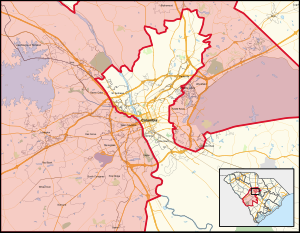
These are tables of congressional delegations from South Carolina to the United States House of Representatives and the United States Senate.
Contents
- U.S. House of Representatives
- Current members
- Historic representation
- United States Senate
- Key
- See also
- Notes
- References
The current dean of the South Carolina delegation is Representative Jim Clyburn (SC-6), having served in the House since 1993.















